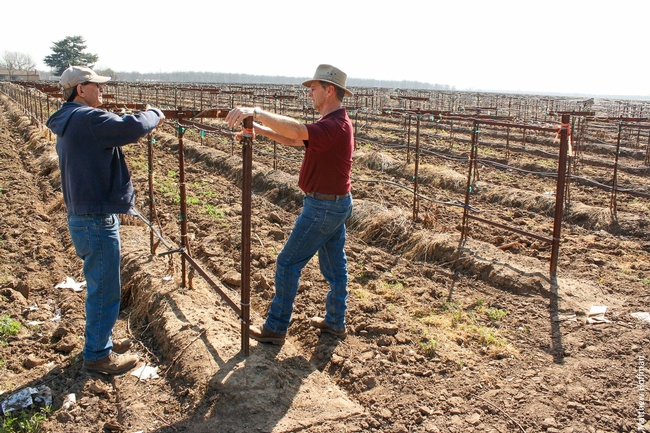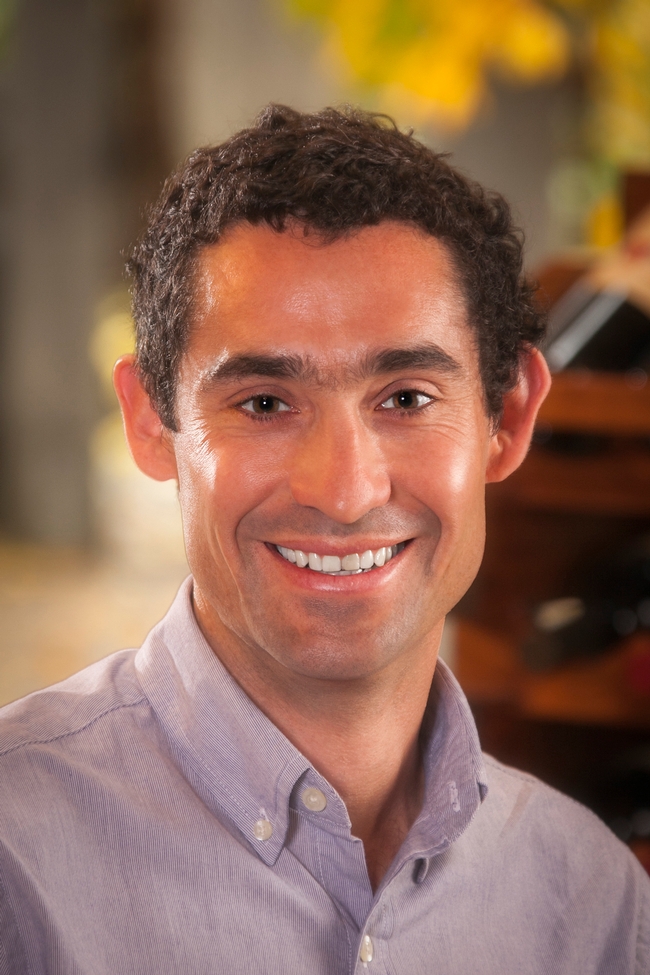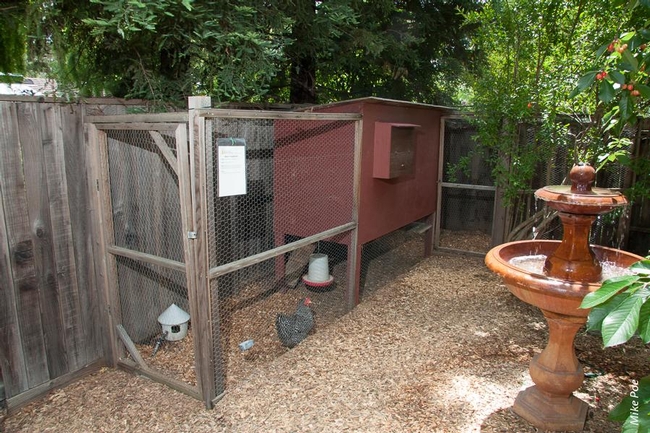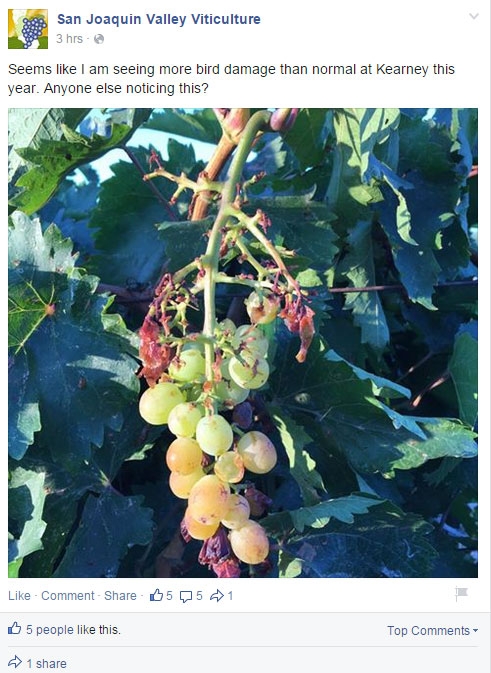
These research results have broad implications for UC Agriculture and Natural Resources (UC ANR), which employs academic professionals in Cooperative Extension offices in all California counties to share science-based agricultural production information with farmers. The study suggests that education strategies that focus on farmers' social learning preferences may result in greater application of new, often more environmentally sound, production methods.
“Agriculture is a knowledge-intensive industry,” said Matthew Hoffman, the lead author of the new study. “But in the UC Cooperative Extension system, a bottleneck in the knowledge sharing network exists because of the limited number of advisors. UC Cooperative Extension is nevertheless in a great position to nurture social learning strategies and alleviate the bottleneck.”
Hoffman, who holds a doctorate from UC Davis in geography, is the grower program coordinator for the Lodi Winegrape Commission, a winegrape marketing, research and grower outreach association in San Joaquin County. Hoffman conducted the research with Mark Lubell, professor in the Department of Environmental Science and Policy at UC Davis, and Vicken Hillis, a postdoctoral researcher in Environmental Science and Policy at UC Davis.

The researchers found that the 11 highest-ranked information resources were social and experiential sources. No formal learning resource was on any region's top 10 list.
“Across all regions, respondents reported that observations of their own vineyard was the most useful learning resource,” the article said. “PCAs, vineyard field crew and other winegrape growers (not family) – all social learning resources – were the second, third and fourth most useful learning resources, respectively, across the regions.”
These results indicate that grower learning is grounded largely in personal experience and knowledge-sharing relationships. Hoffman coined the term “network-smart extension” for the extension strategies that take advantage of farmers' social learning preferences. The approach, he said, capitalizes on the social process of knowledge sharing that naturally takes place among a community of growers.
“Folks are going to share information with one another regardless, the trick is knowing how to accelerate this process by leveraging the network so that those with questions can get in touch with those who have solutions,” Hoffman said. “Network-smart extension can also be defined by its underlying principles. For example, one of the principles is that growers must know what others know. Before people can start asking around for advice about a particular agricultural problem they have, it helps to know who has the expertise they are seeking.”
(The California Agriculture journal article contains a detailed description of network-smart extension.)
In collaboration with Rodrigo Gallardo from the UC Davis School of Veterinary Medicine, the UC ANR Cooperative Extension poultry specialist at UC Davis, Maurice Pitesky, recently consulted with Hoffman to use network-smart extension to share poultry health information. Raising backyard chickens has become increasingly popular. Since the birds are susceptible to poultry diseases, such as avian flu, Exotic Newcastle disease and Salmonella, which can threaten the health of people and of commercial poultry, it is imperative they have sources of accurate chicken health information. But with no ANR poultry advisors in California counties and over 100,000 backyard poultry premises in California, the information must be sent through other channels.

“The goal is to create a network of people who have some knowledge of poultry, who can then connect with their social networks and disseminate the latest information about nutrition, food safety, welfare, poultry health and biosecurity,” Piteskysaid.
Pitesky also created a poultry website to help backyard poultry producers find connections.
“There is a flow diagram, so if you have a food safety question, or a question about ectoparasites, you know who to contact,” Pitesky said. “It's hard to find veterinarians who treat backyard poultry. Our site has a list of 12 veterinarians in six California counties that treat poultry. The goal is to list vets in every county who can treat those birds.”
The scope of Pitesky and Gallardo's network-smart extension is much larger than the scope of a typical farm advisor nurturing connections between PCAs, farmers, consultants and allied industries. Hoffman offers some suggestions of how those connections can be encouraged.
One simple practice is regularly providing nametags for participants at extension field days and meetings.
“The principle is that you have to reduce the barriers to social interactions,” Hoffman said. “I'm less inclined to introduce myself if I don't know their name or I'm embarrassed because I talked to them before, but don't remember their name. Nametags grease the skids for social interaction.”
Another approach Hoffman has used in the Lodi Winegrape Commission's blog called the “Coffee Shop.”
“I have been very intentional about introducing the authors in our blog and newsletters in a way that's as personal as possible, including a photo of the author and contact information,” Hoffman said. “Even though it's not a face-to-face interaction, readers will know the name and face of the person and can contact that person if they have questions.”
A third simple approach is providing meeting flyers with a duplicate copy for a neighbor.

UC ANR Cooperative Extension viticulture specialist Matthew Fidelibus uses Facebook and Twitter to enhance the social network. He recently posted a picture of a withered grape cluster at the UC Kearney Agricultural Research and Extension Center on the San Joaquin Valley Viticulture Facebook page, which has 757 followers.
“Seems like I am seeing more bird damage than normal at Kearney this year,” he commented. “Anyone else noticing this?”
Among the responses, “Starlings and blackbirds will take whole berries. If you see broken berries and skins left, could be finches.”
Fidelibus advertised his upcoming grape field day on his Twitter feed, which has 1,474 followers.
Generally, Hoffman said, engaging in network-smart extension isn't about individual specific practices, but an overriding principle of the program that emphasizes building relationships among practitioners and encourages their engagement within their agricultural community.
“There may be no single or best way to accelerate the natural process of social learning, but extension programs must be adaptive, creative, experimental and flexible in design and execution,” the article said. “Extensionists should be willing to step outside of conventional thinking about how programs can be designed.”